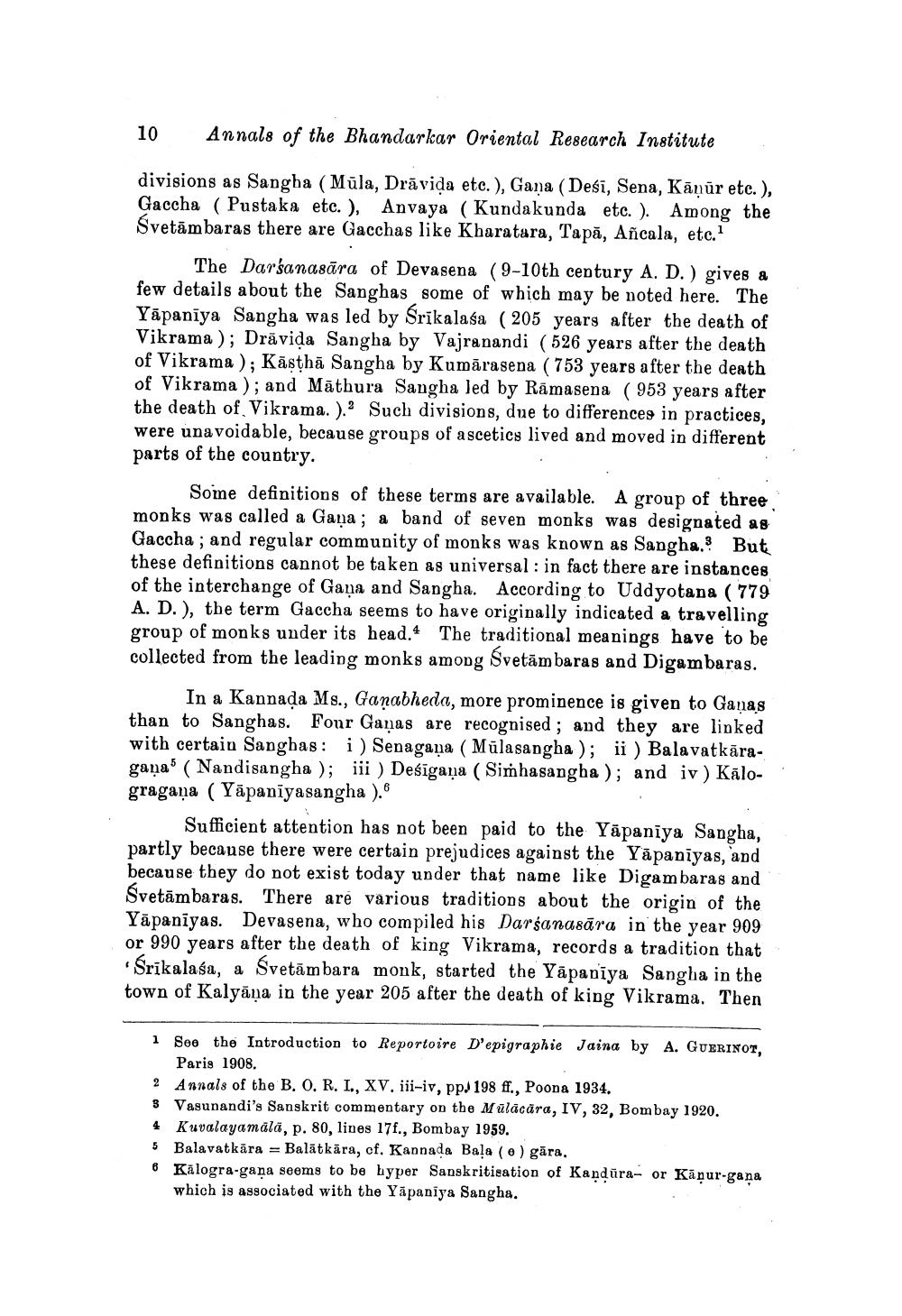Book Title: More Light On Yapaniya Sangha Author(s): A N Upadhye Publisher: A N Upadhye View full book textPage 3
________________ 10 Annals of the Bhandarkar Oriental Research Institute divisions as Sangha (Mūla, Drāvida etc.), Gana (Deśī, Sena, Kāṇür etc.), Gaccha ( Pustaka etc. ), Anvaya (Kundakunda etc.). Among the Svetāmbaras there are Gacchas like Kharatara, Tapă, Añcala, etc. The Darsanasāra of Devasena (9-10th century A. D.) gives a few details about the Sanghas some of which may be noted here. The Yāpanīya Sangha was led by Srikalasa ( 205 years after the death of Vikrama); Drāvida Sangha by Vajranandi ( 526 years after the death of Vikrama); Kāsthā Sangha by Kumārasena ( 753 years after the death of Vikrama ); and Māthura Sangha led by Rāmasena ( 953 years after the death of Vikrama. ). Such divisions, due to differences in practices, were unavoidable, because groups of ascetics lived and moved in different parts of the country. Some definitions of these terms are available. A group of three monks was called a Gana; a band of seven monks was designated as Gaccha ; and regular community of monks was known as Sangha. But these definitions cannot be taken as universal : in fact there are instances of the interchange of Gana and Sangha. According to Uddyotana ( 779 A. D.), the term Gaccha seems to have originally indicated a travelling group of monks under its head. The traditional meanings have to be collected from the leading monks among Svetām baras and Digambarag. In a Kannada Ms., Ganabheda, more prominence is given to Ganas than to Sanghas. Four Gaņas are recognised ; and they are linked with certain Sangbas: i) Senagana (Mülasangha ); ii ) Balavatkāraganas ( Nandisangha ); iii ) Deśīgana ( Simhasangha); and iv) Kālogragana ( Yāpaniyasangha ). Sufficient attention has not been paid to the Yāpaniya Sangha, partly because there were certain prejudices against the Yăpaniyas, and because they do not exist today under that name like Digambaras and Svetāmbaras. There are various traditions about the origin of the Yāpaniyas. Devasena, who compiled his Darśanasāra in the year 909 or 990 years after the death of king Vikrama, records a tradition that Srīkalasa, a Svetām bara monk, started the Yāpanīya Sangha in the town of Kalyāna in the year 205 after the death of king Vikrama. Then 1 See the Introduction to Reportoire D'epigraphie Jaina by A. GUERINOT, Paris 1908. 2 Annals of the B. O, R. I., XV. iii-iv, pp 198 ff., Poona 1934. 3 Vasunandi's Sanskrit commentary on the Mülācāra, IV, 32, Bombay 1920. 4 Kuvalayamālā, p. 80, lines 17f., Bombay 1959. 5 Balavatkāra = Balātkāra, cf. Kannada Bala ( ) gara, 8 Kalogra-gana seems to be hyper Sanskritisation of Kandura- or Kāņur-gana which is associated with the Yăpaniya Sangha.Page Navigation
1 2 3 4 5 6 7 8 9 10 11 12 13 14 15
